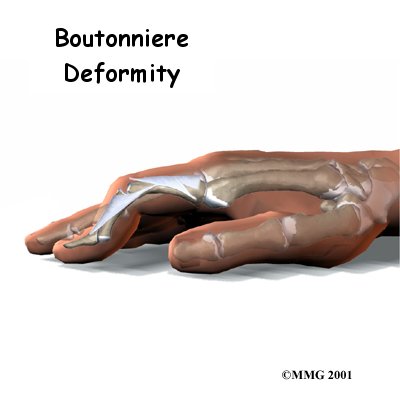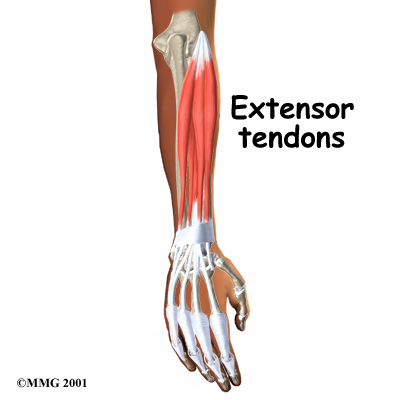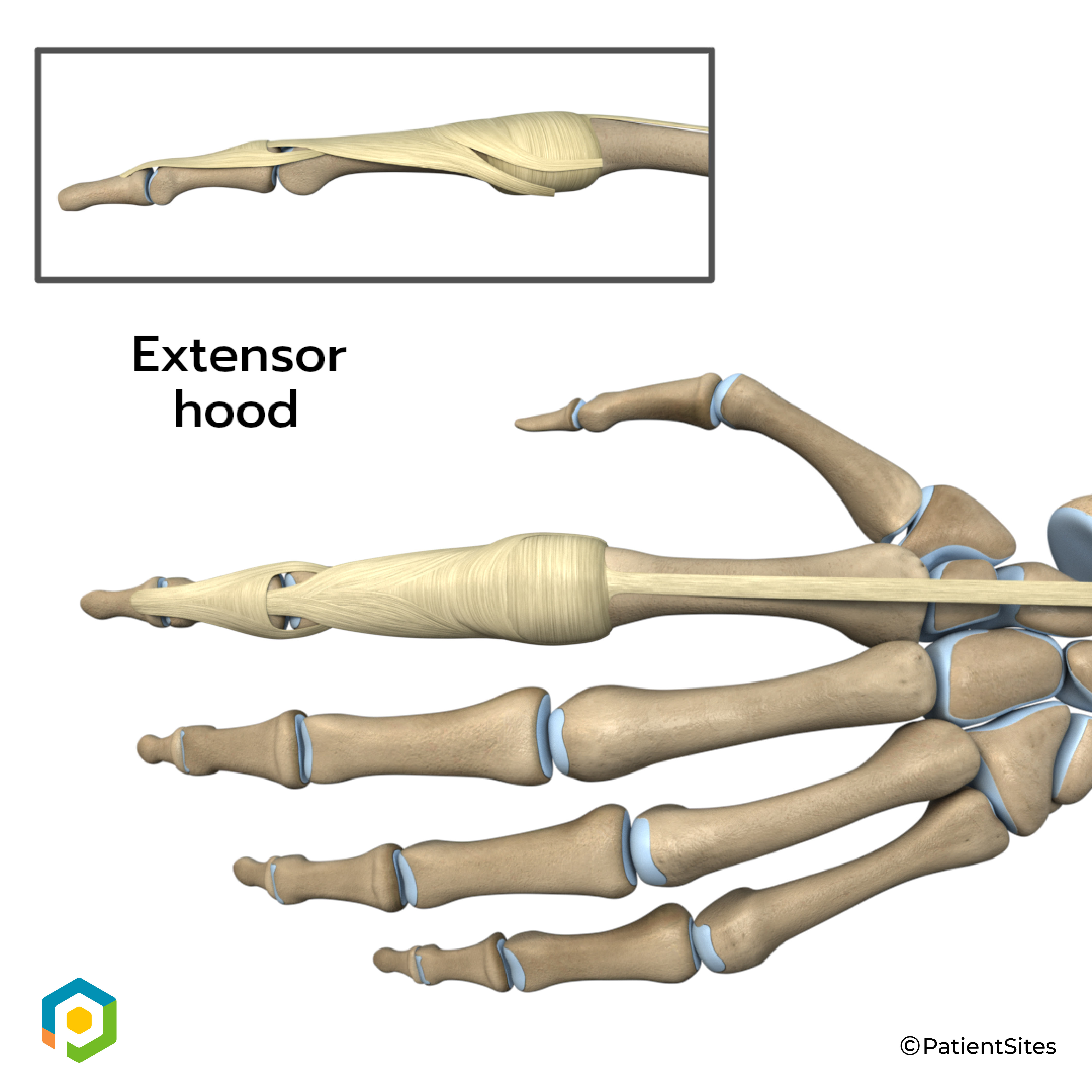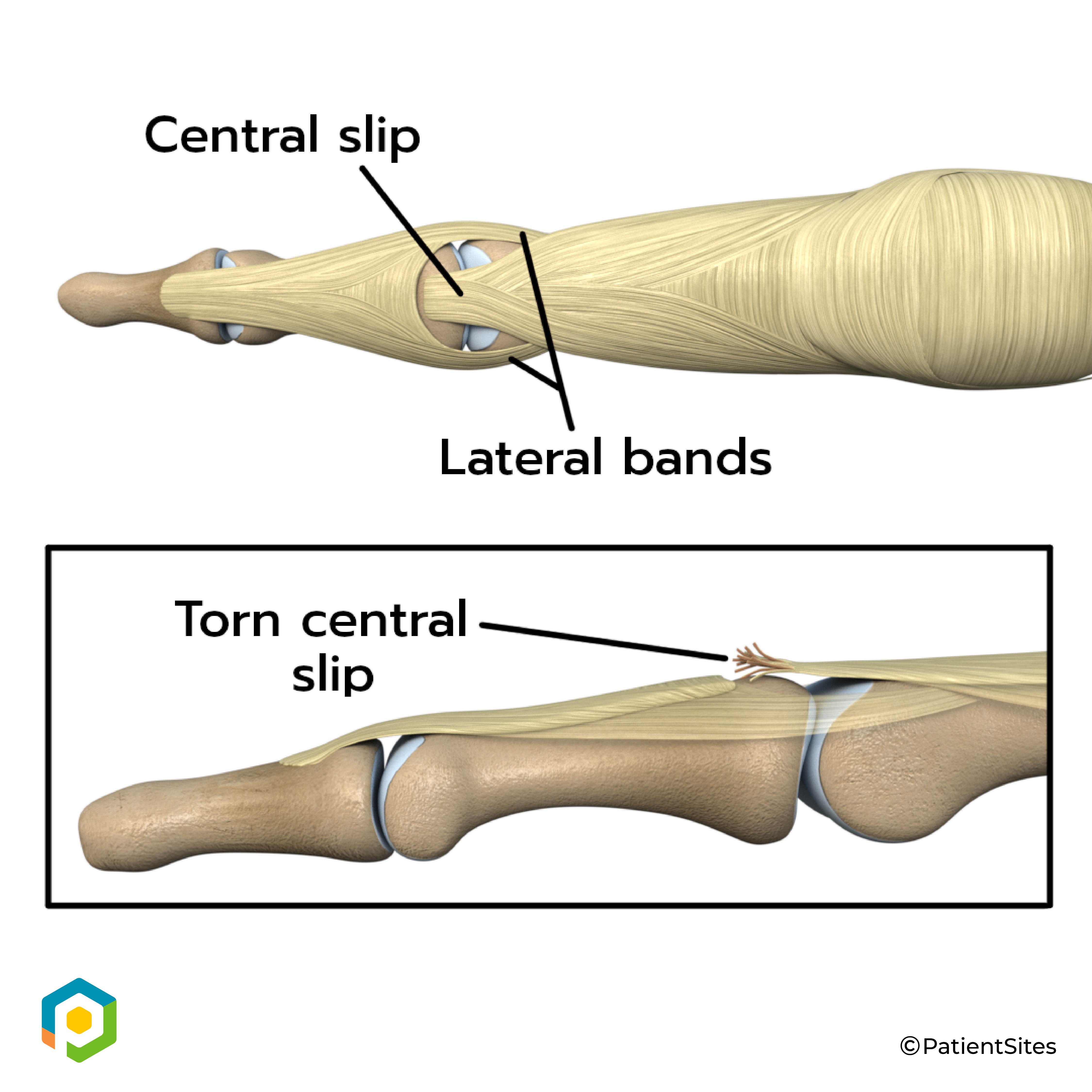Introduction
Physical therapy in Hazle Township for Hand

Welcome to FYZICAL Hazleton's patient resource about Boutonniere Deformity of the Finger.
The tendons that allow each finger to straighten, the extensor tendons, at first appear to be relatively simple. But as the extensor tendon runs into the finger, it becomes a complex and elegantly balanced mechanism that allows very fine control of the motion of each joint of the finger. When this mechanism is damaged in certain areas, this balance can be destroyed. The result is a finger that doesn't work properly. Over time, the imbalance can lead to contractures (tightening of the tendons) and other changes that result in a permanently crooked finger. The boutonniere deformity is one such problem that affects the extensor tendons of the finger.
This guide will help you understand:
- what parts of the finger are involved
- what causes the boutonniere deformity
- how the problem is treated
- what to expect from treatment
Anatomy
What parts of the finger are involved?
The extensor tendons begin as muscles that arise from the backside of the forearm bones. These muscles travel towards the hand, where they eventually connect to the extensor tendons before crossing over the back of the wrist joint. As they travel into the fingers, the extensor tendons become the extensor hood. The extensor hood flattens out to cover the top of the finger and sends out branches on each side that connect to the bones in the middle and end of the finger. When the extensor muscle contracts, it shortens and pulls on these attachments to straighten the finger.
Extensor Tendons

Small ligaments also connect the extensor hood with other tendons that travel into the finger to bend the finger. These connections help balance the motion of the finger so that all the joints of the finger work together, giving a smooth bending and straightening action. Problems arise when these ligaments become too tight or too loose.
Extensor Hood

The fingers are actually made up of three bones, called phalanges. The three phalanges in each finger are separated by two joints, called interphalangeal joints (IP joints). The joint near the end of the finger is called the distal IP joint (DIP joint). (Distal means further away.) The proximal IP joint (PIP joint), is the middle joint between the main knuckle and the DIP joint. (Proximal means closer in.) The IP joints of the fingers work like hinge joints when you bend and straighten your hand.
A boutonniere deformity occurs when disease or injury causes the PIP joint to become flexed (bent) and the DIP joint is pulled up into too much extension (hyperextension).
Related Document: FYZICAL Hazleton's Guide to Hand Anatomy
Causes
How does this condition occur?
The boutonniere deformity happens when the extensor tendon attachment to the middle phalanx is injured. This area is called the central slip. This tendon attachment may be injured in many ways. The central slip may simply be damaged when a cut occurs over the back of the middle finger joint (PIP joint). More commonly the central slip tears or pops off its attachment on the bone when the finger is jammed from the end, forcing the PIP joint to bend.
Central Slip

When a small amount of bone is pulled off with the tendon, doctors call it an avulsion fracture. The central slip can also be torn when the PIP joint is dislocated and the middle phalanx dislocates towards the palm.
Middle Phalanx Dislocates

Other conditions that affect the central slip can cause the boutonniere deformity. For example, prolonged inflammation in the PIP joint from rheumatoid arthritis stretches and eventually ruptures the central slip. A severe burn on the hand can damage the central slip. Another problem affecting the hand, called Dupuytren's contracture, can weaken the central slip and produce the boutonniere deformity.
Related Document: FYZICAL Hazleton's Guide to Dupuytren's Contracture
The boutonniere deformity may not occur right away. It is the imbalance in the extensor hood that results from the torn tendon that eventually causes the deformity. Because the middle phalanx no longer is pulled by the central slip, the flexor tendon on the other side begins to bend the PIP joint without resistance. The lateral bands begin to slide down along the side of the finger where they continue to straighten the DIP joint. Eventually the finger becomes stiff in this position.

